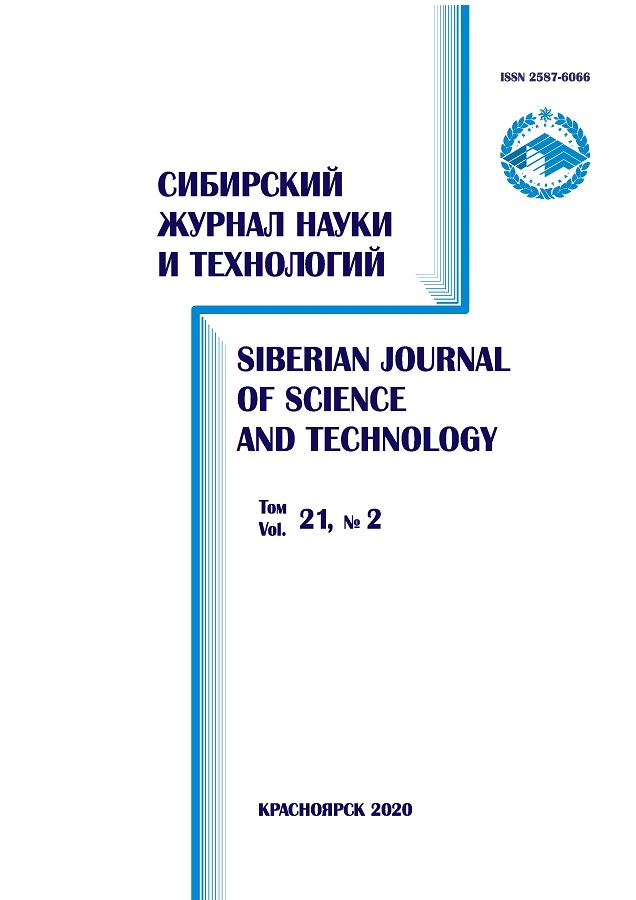Modeling of the stress-strain state of rocket-space technology structural elements manufactured by using additive technologies
- Authors: Ushakova E.S.1
-
Affiliations:
- Bauman Moscow State Technical University
- Issue: Vol 21, No 2 (2020)
- Pages: 243-250
- Section: Section 2. Aviation and Space Technology
- Published: 22.10.2023
- URL: https://journals.eco-vector.com/2712-8970/article/view/611138
- DOI: https://doi.org/10.31772/2587-6066-2019-20-2-243-250
- ID: 611138
Cite item
Full Text
Abstract
One of the promising areas for improving the methods of manufacturing structural elements of rocket and space technology is the use of selective laser melting technology which represents a unique opportunity to manufacture metal products by melting powder and producing a one-piece solid phase structure. However, pores and other structural defects can appear in the formed element during laser sintering which causes a decrease in the strength characteristics of the parts produced. An important step in the additive technologies introduction is the development of methodology for the preliminary prediction of the strength characteristics of manufactured structural elements under the influence of mechanical loads with the help of mathematical modeling. The methodology for estimating the material strength reduction of a rocket-space technology element obtained using additive technologies by simulating a porous structure and calculating the characteristics of the stress-strain state is presented.
The proposed mathematical model and the methodology for calculating the specimen loading on the basis of the distortion energy theory allow calculating the stress-strain state in the process of numerical simulation for different values of the pore diameter. The reduction in yield strength due to the material porosity of the part is estimated using a coefficient equal to the ratio of equivalent stresses arising when a load is applied to a specimen manufactured using traditional and additive technologies. The value of the introduced coefficient characterizes the structure of the grown product and is considered as a function of the random arrangement of pores in the specimen under study. The appearance of pores is the result of a combination of factors: the composition and dispersion of the original metal powder, feed rate, removal distance and laser power during sintering, part orientation and sintering direction, the height of the level of powder deposited on a special base before sintering, etc.
The paper evaluates the reduction in strength for the working part of a series of tensile test specimens grown from metal powder of different dispersity. The non-linear nature of the dependence of the yield strength on the particle diameter of the original metal powder is established. The maximum value of the yield strength corresponds to the specimen with the minimum value of the total surface area of the pores.
About the authors
Elizaveta S. Ushakova
Bauman Moscow State Technical University
Author for correspondence.
Email: ellizaweta@gmail.com
is a technician of NIIEM and an employee of the Department of Rocket Engines
Russian Federation, 5, 2-ya Baumanskaya St., Moscow, 105005References
- Artemov A. L. [Development of design and technology solutions for additive manufacturing of prototype inner lining for combustion chamber of multifunctional liquid-propellant rocket engine]. Kosmicheskaya tekhnika i tekhnologii. 2017, No. 1, P. 50–62 (In Russ.).
- Abdullin M. I., Basyrov A. A., Nikolaev A. V. [Metal filled compositions for 3D printing]. Universum: khimiia i biologiia. 2015, No. 11(18). Available at: http://7universum.com/ru/nature/ archive/item/2701 (accessed 05 July 2017).
- Grigoryanc A. G., Kazaryan M. A., Lyabin N. A. Lazernaya precizionnaya mikroobrabotka materialov [Laser Precision Micromachining]. Moscow, Fizmatlit Publ., 2017, 413 p.
- Elistratova A. A., Korshakevich I. S., Tikhonenko D. V. [3D-printing technologies: advantages and disadvantages]. Reshetnevskie chteniia. Sbornik materialov XVIII Mezhdunarodnoi nauchno-prakticheskoi konferentsii [Reshetnev readings. The collection of materials of XVIII International scientific and practical conference]. Krasnoyarsk, 11–14 November 2014, SibSAU Publ., 2014, P. 557–559.
- Zlenko M. A., Popovich A. A., Mutylina I. N. Additivnye tekhnologii v mashinostroenii [Additive technologies in mechanical engineering]. Saint-Petersburg, Izd-vo Politekhnicheskogo universiteta Publ., 2013, 223 p.
- Mosolov S. V., Sidlerov D. A. [Comparative analysis of the characteristic features of operational process in liquid rocket engine combustion chamber with jet-centrifugal and cebtrifugal-centrifugal injectors by means of numerical simulation]. Vestnik MGTU im.N. E. Baumana. Ser. Mashinostroenie. 2016, No. 2, P. 60–71 (In Russ.).
- Meiz Dzh. Teoriia i zadachi mekhaniki sploshnykh sred [Theory and problems of continuum mechanics]. Moscow, LKI Publ., 2007, 320 p.
- Galimova L. A., Atroshchenko V. V., Smirnov V. V. et al. [Structure and properties of stainless steel specimens received by method of selective sintering]. Vestnik Bashkirskogo universiteta: matematika i mekhanika. 2016, No. 2, P. 258–263 (In Russ.).
- Hendrickson J. W. Use of Direct Metal Laser Sintering for Tooling in High Volume Production. USU Library, Logan, Utah, 2015. 35 p.
- Torrado A. R., Roberson D. A. Failure Analysis and Anisotropy Evaluation of 3D-Printed Tensile Test Specimens of Different Geometries and Print Raster Patterns. Journal of Failure Analysis and Prevention. 2016, No. 1, P. 154–164.
- Delgado J., Ciurana J., Rodríguez C. A. Influence of process parameters on part quality and mechanical properties for DMLS and SLM with iron-based materials. The International Journal of Advanced Manufacturing Technology. 2012, Vol. 60, No. 5–8, P. 601–610.
- Smith D. H. et al. Microstructure and mechanical behavior of direct metal laser sintered Inconel alloy 718. Materials Characterization. 2016, Vol. 113, P. 1–9.
- Features of Local Corrosion of AISI316L Steel Manufactured by Selective Laser Melting. Kuznetsov P. A., Krasikov A. V., Staritsyn M. V., Mushnikova S. Y., Parmenova O. N. Protection of Metals and Physical Chemistry of Surfaces. 2018, Vol. 54, No 3, P. 484–489.
- Gu D., Shen Y. Processing conditions and micro-structural features of porous 316L stainless steel components by DMLS. Applied Surface Science. 2008, Vol. 255, No. 5, P. 1880–1887.
- GOST 1497–84 Metally. Metody ispytanij na rastyazhenie [State Standard 1479-84. Metals. Tensile test methods]. Moscow, Standartiform, 2005, 24 p.
Supplementary files










